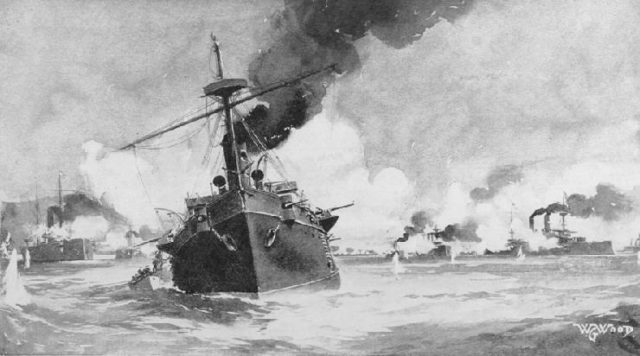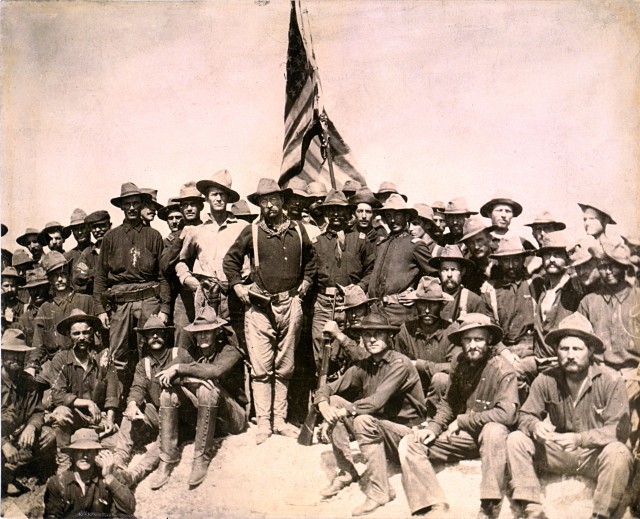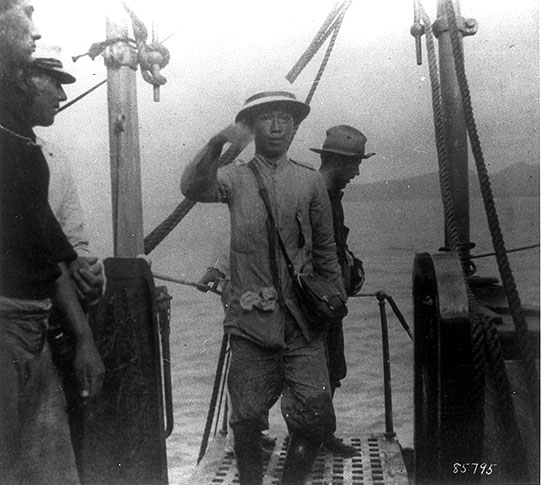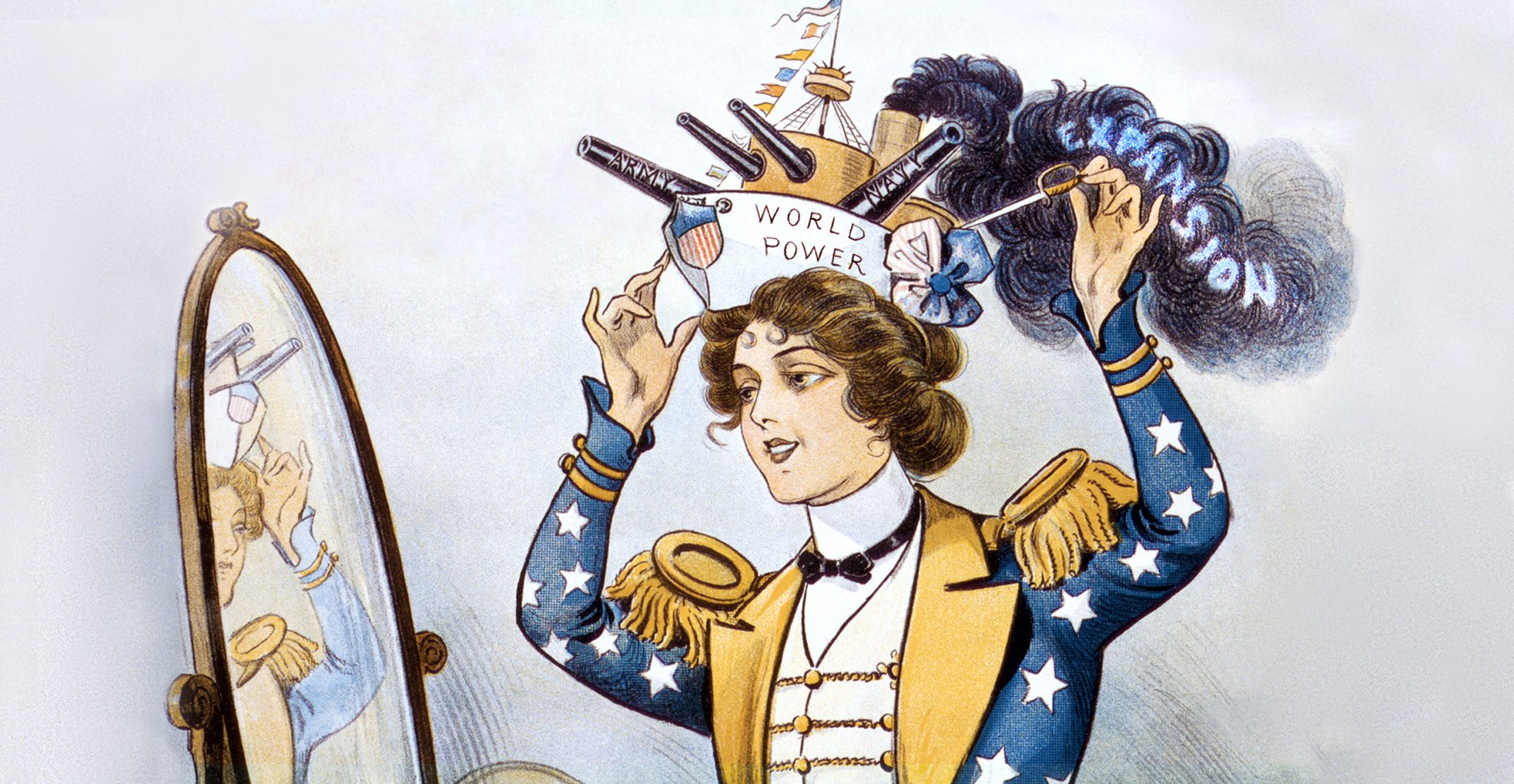The Spanish-American war began on April 21, 1898. The formal declaration of war preceded what would be the first overseas war fought by the Americans, including campaigns in Cuba and the Philippines.
Among the two most prominent reasons for the war were the ongoing Cuban and Filipino struggle against Spanish rule, and the explosion of the battleship U.S.S. Maine, killing 268 men. The explosion was thought to be the result of Spanish sabotage, but this was later found to be a dubious claim.
Even so, eleven days after the formal declaration the U.S. Navy, led by Commodore George Dewey, swiftly struck out and defeated the Spanish Pacific fleet in Manila Bay. Then, misinformed of Dewey’s success, President McKinley ordered a campaign against Manila.

The Presidio of San Francisco was thought to be the military base optimally suited to stage the campaign, and as such, attracted volunteer soldiers from all over the United States to train at the Presidio before undertaking the voyage to the Philippines. The campaign was described by Secretary of State John Hay as a “splendid little war.”
The Presidio was optimal because of its placement next to an integral West Coast harbor, and it possessed enough space to both house and train large numbers of troops. In May 1898, the 1st California Infantry and the 2nd Oregon Infantry Regiments left the Presidio for the Philippines. They were followed not long after by volunteer units from Washington State, Montana, Wyoming, Kansas, Utah, Tennessee, and Montana.
Over the two year period straddling the opening years of the twentieth century, 80,000 men passed through the Presidio on their way both to and from the Philippines. Army life at the Presidio was anything but wonderful. It was cramped, and the temporary tent camps were a haven for sickness. The situation worsened until the military improved troop facilities.

Halfway around the world, the guerrilla warfare waged by Philippine rebels against Spanish colonials raged on. Emilio Aguinaldo, the Philippine leader-in-exile, communicated with the U.S. Army en route to the Philippines.
His idea was that the United States would assist with the insurrection. But that wasn’t what the United States had in mind. The United States wanted to extend their influence across the Pacific, landing strategic positions in the far east that would not only pay economic dividends but also strategic ones.
So in a classic imperial about-face, after signing the Treaty of Paris that ended the war in late 1898, the U.S heard Cuba’s plea for independence, but kept the Philippines, (as well as Puerto Rico and Guam) for itself. Naturally, this enraged Philippine nationalists and the conflict known as the Philippine War came as a result.
In February, Filipino nationalists called Insurrectos, led by Aguinaldo, provided bitter resistance against their new American colonizers by attacking U.S. troops, including both the 24th and 25th Infantry regiments. The United States sent the 9th and 10th Cavalry to the Philippines as reinforcements.
The size and scale of the fighting outstripped that of the Spanish-American war that had preceded it. The troop strength of the United States was considerably smaller and at a disadvantage when compared to Aguinaldo’s 40,000 fighters. It wasn’t until 1901 when the American soldiers numbered 75,000 that the conflict really started to turn.

The fighting was furious until March 23, 1901, when Brigadier General Frederick Funston led the assault that would culminate in the capture of Emilio Aguinaldo, signaling the beginning of the end of the war. Now deprived of their fiery leader, the fighting died down after Aguinaldo’s capture, but Theodore Roosevelt did not actually end the war until July 4th, 1902.
